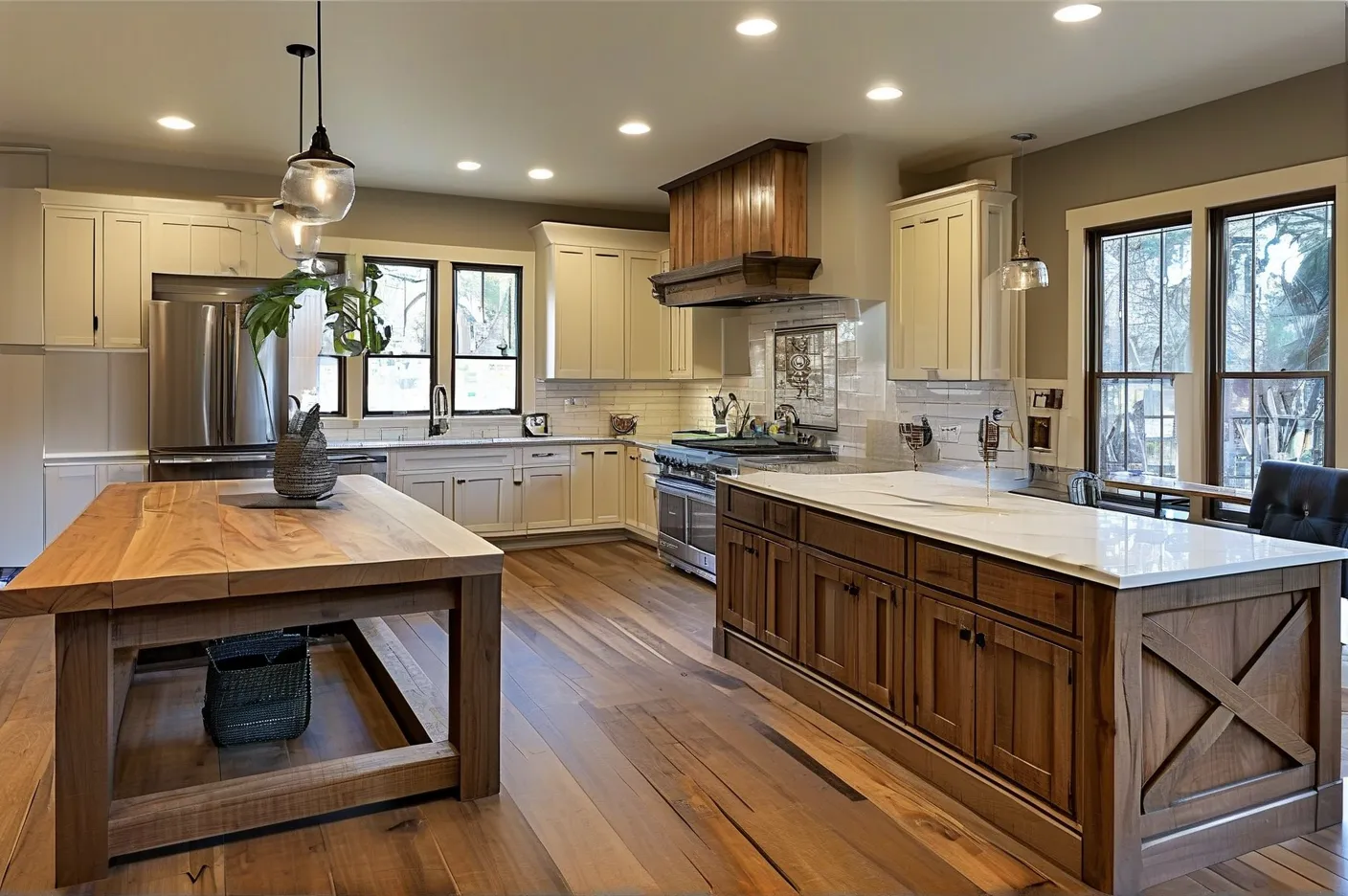When choosing a butcher block countertop, thickness isn’t just an aesthetic consideration—it directly impacts functionality, durability, and long-term maintenance. As kitchen designs evolve in 2025, homeowners and designers increasingly prioritize work surfaces that balance cutting-edge style with robust performance. This guide breaks down the latest trends, expert recommendations, and practical insights to help you select the ideal thickness for your space.
Standard Thickness Options: What 2025 Homeowners Need to Know
Most manufacturers offer butcher blocks in four primary thicknesses:
– 1.5 inches: Ideal for light-duty kitchens or decorative applications
– 1.75 inches: The current standard for residential kitchens (recommended by the Woodwork Institute of America for balanced durability)
– 2.25 inches: Gaining popularity for heavy-use kitchens and commercial crossover designs
– 3 inches+: Emerging as a statement choice for luxury kitchens and specialty prep stations
Recent data from the National Kitchen & Bath Association (NKBA) shows a 22% year-over-year increase in demand for 2.25-inch slabs, driven by the rise of home culinary enthusiasts post-pandemic.
Durability Science: How Thickness Impacts Performance
Thicker slabs (2.25”+) provide three key advantages:
1. Extended Resurfacing Potential: A 2024 Material Durability Study by TimberTech Labs confirmed that 2.25-inch maple countertops withstand 3x more sanding cycles than 1.75-inch versions.
2. Thermal Stability: Thicker wood resists warping better in humid environments—critical for open-concept kitchens merging with outdoor spaces.
3. Structural Integrity: For islands with overhangs or built-in appliances, the NKBA recommends minimum 2-inch thickness to prevent sagging.
However, thicker isn’t always better. The European Woodworking Federation warns that slabs exceeding 3 inches may develop internal stress cracks if not properly acclimated during installation.
2025 Trend Analysis: Balancing Form and Function
Current design preferences show three notable shifts:
1. Hybrid Installations: Pairing 1.75-inch perimeter counters with a 2.25-inch prep zone (as seen in 68% of award-winning kitchens at the 2024 International Home Design Expo)
2. Edge Profiles: Thicker counters (2”+) increasingly feature waterfall edges or integrated drainage grooves
3. Material Combinations: Butcher block islands at 2.25” thickness paired with quartz perimeter counters—a trend up 41% YoY per Houzz’s 2025 Kitchen Report
Expert Maintenance Tips for Different Thicknesses
John Boos & Co.’s lead craftsman recommends these care protocols based on slab depth:
| Thickness | Resealing Frequency | Max Safe Temp | Cutting Board Use |
|---|---|---|---|
| 1.5″ | Every 4 months | 150°F | Light chopping |
| 1.75″ | Every 6 months | 175°F | Moderate use |
| 2.25″ | Annually | 200°F | Heavy prep |
| 3″+ | Biannually | 250°F | Commercial-grade |
Source: John Boos & Co. Care Guidelines v2025
Cost Considerations: Budgeting Smartly in 2025
While material costs vary by wood type (maple remains the most cost-effective at $35-$55/sqft), thickness impacts both initial price and long-term value:
– 1.75-inch maple: $48/sqft (average) with 12-year lifespan
– 2.25-inch walnut: $82/sqft with projected 20-year lifespan
– Custom edge treatments add $15-$30 per linear foot
The Appraisal Institute notes that quality butcher blocks now yield a 67% ROI in home sales—up from 58% in 2020—making them a strategic investment.
Future-Proof Your Choice: Questions to Ask Before Buying
- “Does my ventilation system support thicker wood’s humidity needs?” (Consult HVAC specialist)
- “What’s my planned cooktop/undermount sink configuration?” (Verify cabinet support requirements)
- “How often will I realistically maintain the surface?” (Be honest about upkeep commitment)
As sustainability becomes non-negotiable, look for FSC-certified providers offering carbon-neutral manufacturing—27% of surveyed homeowners in a Green Building Council study cited this as their top purchasing factor for wood countertops. Whether renovating or building new, aligning thickness with your cooking habits and design vision ensures your butcher block remains both functional and beautiful through evolving kitchen trends.

Leave a Reply